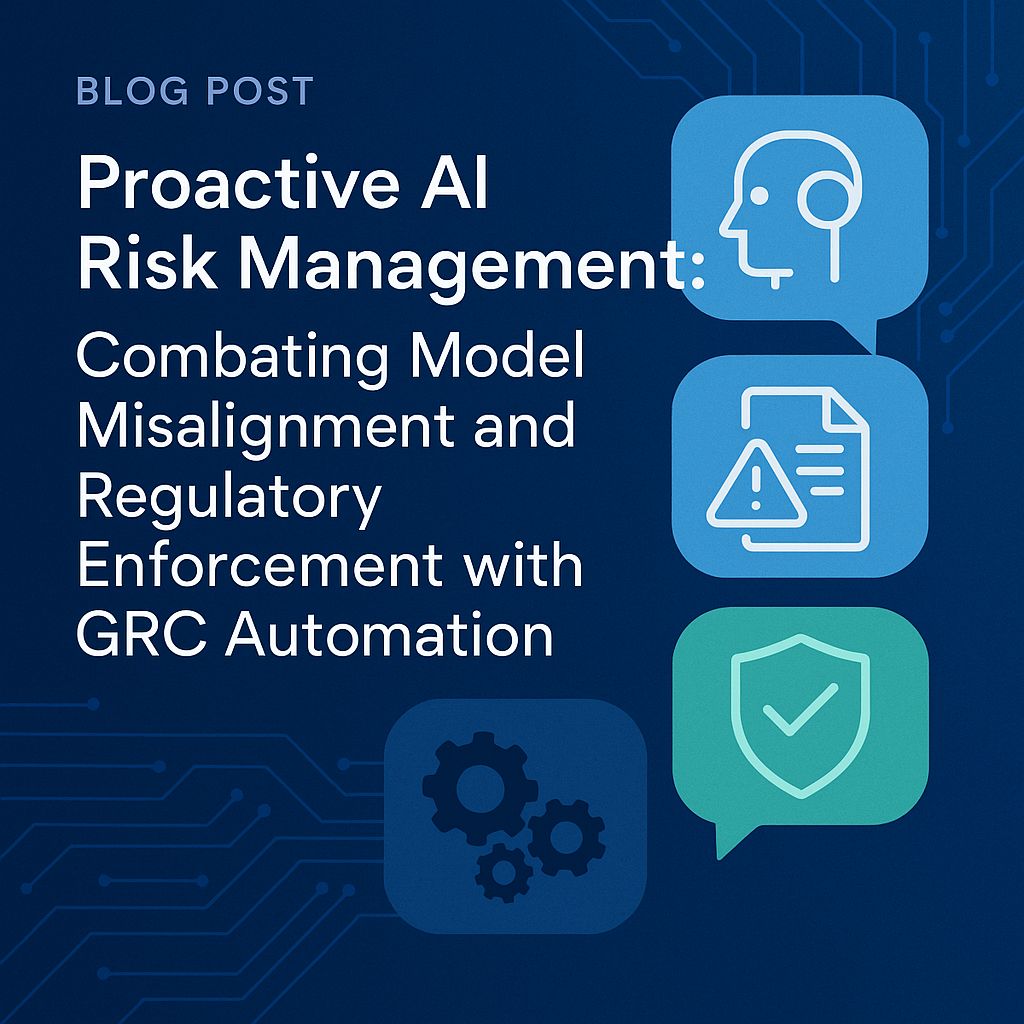Proactive AI Risk Management: Combating Model Misalignment and Regulatory Enforcement with GRC Automation

Introduction
As AI systems become integral to business operations, two critical risks are on the rise: model misalignment—where AI behaves unpredictably—and intensified regulatory enforcement against unsafe practices. Recent research shows training on insecure code can induce “context rot” in large language models, leading to misaligned outputs that undermine governance controls [AI News 25-06-19]. At the same time, regulators like the U.S. OCC are ramping up enforcement against inadequate risk controls in financial institutions [GRC News 25-06-19]. You need an approach that unifies AI risk detection with compliance automation to stay ahead.
Understanding Model Misalignment in AI
Model misalignment occurs when an AI system drifts from its intended objectives. Common causes include insecure training data, code vulnerabilities, or evolving contextual demands that exceed the model’s original scope. Without continuous oversight, misaligned models can:
- Generate incorrect or biased decisions
- Expose sensitive data through unintended behaviors
- Violate regulatory requirements for accuracy and fairness
Escalating Regulatory Enforcement
Regulators globally are cracking down on insufficient AI risk management:
- OCC Enforcement: The U.S. OCC’s latest enforcement round targeted banks with weak risk controls, emphasizing third-party and AI-driven processes [GRC News 25-06-19].
- Irish DPC Fines: Ireland’s Data Protection Commission issued record fines for improper AI data handling, highlighting transparency and accountability failures [GRC News 25-06-19].
- ABN AMRO Penalty: A €15 million fine driven by incentive-misaligned conduct illustrates the consequences when AI-driven incentive structures go unchecked [GRC News 25-06-19].
The Role of AI Compliance Automation
To mitigate both model misalignment and regulatory risk, modern GRC platforms embed AI compliance automation with built-in expert review. Compliance. Accelerated by AI. Verified by Experts.
Continuous Horizon Scanning for AI Risks
AI-powered horizon scanners ingest updates from AI research bodies and regulatory agencies 24/7. When a new threat—like “context rot”—emerges, automated alerts flag impacted models and suggest remedial actions, from data sanitization to retraining protocols.
Automated Control Mapping and Misalignment Detection
A compliance automation engine aligns regulatory requirements (e.g., model explainability, bias testing) with your existing control framework. If drift or misalignment is detected, the platform automatically maps corrective controls—such as additional fairness tests or code security checks—reducing manual mapping by up to 70%.
Expert Review and Regulatory Response Workflows
AI-generated recommendations flow through a human-in-the-loop workflow. Compliance teams review suggested fixes, enrich context, and approve changes. Once validated, the system logs evidence in an audit-ready repository, ensuring you can respond swiftly to regulatory inquiries.
Key Benefits of GRC Automation for AI Risk
- Speed: Rapid identification and remediation of misaligned models, cutting response times by up to 80%.
- Coverage: Continuous monitoring across 900+ global regulations ensures no rule slips through the cracks.
- Accuracy: Automated control mapping reduces human error and standardizes definitions across jurisdictions.
- Audit-Readiness: A centralized evidence library collects logs, test results, and expert reviews, making audits painless.
Best Practices for Implementing AI Compliance Automation
- Start with High-Risk Models: Prioritize AI systems used in credit decisions, fraud detection, or customer-facing interfaces.
- Define Clear Ownership: Assign cross-functional teams—compliance, data science, legal—to oversee automation workflows and expert reviews.
- Continuously Update Controls: Leverage AI-driven horizon scanning to keep model testing frameworks aligned with the latest research and enforcement trends.
- Train Experts on AI Risks: Regularly upskill review teams on new AI threats like model drift and context rot to maintain strong oversight.
- Engage in Simulated Audits: Run internal drills to test automated workflows and expert review gates before real regulatory examinations.
Conclusion
Model misalignment and regulatory enforcement present complex, evolving challenges—but you don’t have to tackle them with manual processes alone. By embedding AI compliance automation with human-verified workflows, you proactively identify and remediate AI risks while staying audit-ready. Embrace a unified GRC strategy that accelerates compliance, safeguards model integrity, and strengthens your regulatory posture.
Stay Updated with Our Newsletter
Join our newsletter to receive the latest updates and insights from our blog. Stay informed about compliance trends and best practices.
